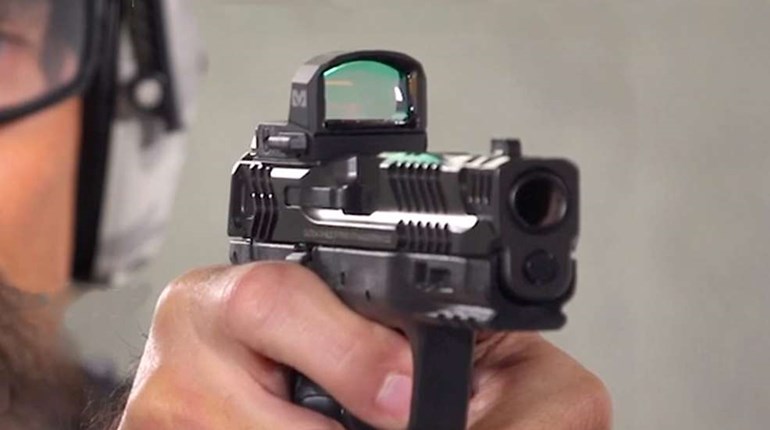
Tunnel vision can be caused by a number of things, including health issues, but we are going to look at tunnel vision as it relates to life-threatening, dangerous situations. It is the physical phenomenon that occurs when we get up close and personal with someone, or something, that we perceive as an immediate threat to our lives. In those instances, we often focus on the threat to the exclusion of everything else that is going on around us.
For example, we enter a convenience store and observe a man with a gun in the act of robbing the store clerk. Or, even worse, he turns and points the gun at us in order to take us under control. We may be so focused on the threat that we never even see his armed partner who is in another part of the store, aiming his gun at us.
We may even have tunnel vision to the extent that our attention is focused on the gun in the crook’s hand. It is not unheard of, in a shootout, for people to be so focused on the gun itself as a threat that they end up shooting at the gun instead of directing their shots to the vital zone of their attacker. In studying police shootings, we often find that bullets from the cops or the crooks have actually impacted the others’ guns.
Tunnel vision can also be a further problem when it causes us to fail to see non-combatants who are immediately behind the crook, or so close to the crook as to be in danger of being hit by bullets that miss the intended target.
In the 1870s, while he was marshal of Abilene, KS, James B. “Wild Bill” Hickok had to shoot a gambler, Phil Coe, in a street fight. It was dark, visibility was limited and things were tense. From out of the dark, to Hickok’s side, another man came running up. Hickok saw the gun in his hand and quickly shot the man down. It turned out to be one of his own deputies coming to his aid. While we can’t say for sure, it could well be that tunnel vision was a contributing factor in this tragedy.
Another danger for the armed citizen is that we can be so focused on the threat that we fail to see the police arrive. And, due to that focus, with the addition of auditory exclusion, we might not clearly hear their challenge and instructions. Under those circumstances, it is very likely that our armed citizen may be perceived by the police to be the bad guy, as he or she is ignoring their orders to drop the gun. You can imagine what the result might be.
Tunnel vision is difficult to overcome, but it can be successfully dealt with. We teach the armed citizen to focus on the front sight of his handgun when forced to fire on a criminal. This, in itself, is an act of breaking the tunnel vision. Some who are uninformed or poorly trained may say that focusing on the front sight is an impossible act when a person is under fire. But, we know that this is not true because we have taught students to do this and they have survived gunfights because they purposely broke the tunnel vision. Focusing on the front sight in the moments when our lives were in danger is indeed critical.
One of the ways that tunnel vision is overcome is through proper training. We understand that tunnel vision can be broken and must be broken. We know others have done it and we practice and plan so that we can do it, too.
We also improve our ability to overcome tunnel vision by working to improve our awareness skills. Entering that convenience store, we are in the habit of scanning the room because we know that robberies often occur in such places. Because we consciously scan our surroundings, we see places of potential cover and we see accomplices, as well as the crook at the counter. While I’m not crazy about cliches, “Keep your head on a swivel” makes perfect sense and counters the tendency toward tunnel vision.
Once a person has dealt with the immediate threat and the crook is down and no longer a danger, it is critical for the armed citizen to again scan the area for additional threats. Some training sources call this “Look and Assess.” Some who are poorly trained will be seen to do a little choreographed move, where they wiggle their heads this way and then wiggle their heads that way. All of which is useless. A person must actually and consciously look around himself for additional threats. Some actual force-on-force exercises often help one discern the difference between operator choreography and the real thing. One may look, but does he actually see?
When dealing with a tough situation, I always liked to get my back up against a wall or other solid protection whenever possible. This gave me a 180-degree area to cover and minimized the possibility of an attack coming from behind me.
It is critical that the armed citizen understand tunnel vision. He or she should understand why it occurs and work at finding ways to break it, or avoid it entirely, both of which can be accomplished. “Keep your head on a swivel” and “look and assess” are both important skills to develop.
You can avoid tunnel vision and you can focus on your front sight with proper training and understanding. By doing so, you can see the whole picture of what is going on around you and more effectively defend yourself.




































